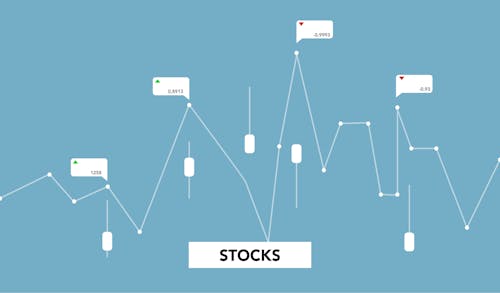
 Image Source: Pexels
Image Source: Pexels
As expected, President Trump’s friendliness to the oil and gas industry carried over to his 2nd term. Following the avalanche of executive orders (EOs) on January 20th, multiple ones were aimed at federal agencies to remove regulatory burdens against the energy sector. Just by declaring a National Energy Emergency, President Trump set the stage for accelerated completion of energy and infrastructure projects. This includes fuel waivers, expediting the utilization of Alaska’s ample resources, and canceling many Biden era policies that overturned Trump’s own policies in his 1st term.In short, by significantly increasing domestic energy supply across the board, President Trump aims to lower the cost of living to “increase the prosperity of the American worker”. Of course, the fastest way to accomplish that is to lower energy costs that go into every product and service in existence.The question is, which energy giants will benefit most during Trump’s term, ExxonMobil (NYSE: XOM) or Chevron (NYSE: CVX)? Let’s examine their latest earnings to see where they are positioned.
Trump’s International Moves to Lower Oil PricesRemoving the regulatory costs of oil & gas operations is just one layer for boosting energy production. President Trump is counting on tariffs as the main tool to bring down the oil price. This includes newly announced 25% tariffs against Canada and Mexico, although it is still uncertain if they will cover crude oil.
“It depends on what the price is. If the oil is properly priced, if they treat us properly — which they don’t.”
President Donald Trump at Thursday’s White House press conference
Speaking of which, Brent crude oil price, now at $75.61 per barrel, has remained stable, down only 0.88% year-to-date, having dropped 6.55% over one year. In addition to tariffs, President Trump expects Saudi Arabia to push OPEC+ to lower oil prices by boosting production. OPEC+ representatives should decide this course on February 3rd at the Joint Ministerial Monitoring Committee. Even without Trump’s prompting, OPEC+ nations are expected to unwind previous production cuts starting from April. With lowered oil prices on the horizon, it is then a matter of ExxonMobil and Chevron managing their cost-efficiency, expansion plans, and debt loads.
ExxonMobil Beats Chevron in Earnings ExpectationsOn Friday, ExxonMobil reported its Q4 2024 earnings, showing $7.38 billion adjusted profit. Although lower than Q3’s $8.6 billion, it beat the LSEG analyst consensus of $1.56 at $1.67 earnings per share (EPS).For the full year, as the largest domestic oil producer, ExxonMobil generated $33.46 billion earnings, significantly down from 2023’s $38.57 billion, suggesting the economy slowed down under the Biden admin.To service ongoing operations and future growth, ExxonMobil generated $34.4 billion free cash flow for the entire year. This is down from $37.53 billion in 2023. Chevron dropped its earnings on the same day, showing $3.24 billion for Q4. Mirroring slower demand in line with ExxonMobil, this is also down from Q3’s $4.48 billion. However, Chevron failed to exceed the LSEG consensus of $2.11 at $2.06 adjusted earnings per share (EPS).
Chevron Is More Debt-Loaded than ExxonMobilAs the second largest domestic oil producer, for the full year 2024, Chevron generated $17.66 billion earnings, down from $21.36 billion in 2023. Chevron’s free cash flow is also down, from $19.8 billion in 2023 to $15 billion in 2024. However, compared to ExxonMobil’s 8.3% annual free cash flow decrease, Chevron performed better at a 7.3% drop. Nonetheless, when it comes to debt levels, ExxonMobil has a net debt-to-capital ratio of 6%, while Chevron’s is much higher at 10.4%.In raw numbers, ExxonMobil has total debt of $41.7 billion, minus $23 billion worth of cash and cash equivalents. Chevron has more debt than ExxonMobil’s cash, at total debt of $24.54 billion, minus $6.78 billion in cash and cash equivalents.
Expectations Moving ForwardExxonMobil benefited greatly from the acquisition of Pioneer Natural Resources last May, having become the largest Permian Basin oil producer. A reminder, the Permian Basin accounted for 43,6% of US oil production, and 15% of gas production, in 2022. Before ExxonMobil acquired Pioneer Natural Resources, it was the top oil producer in the Permian Basin in Q2 2023. Image credit: Reuters, source: EnverusIn total, ExxonMobil elevated its oil-equivalent production from 3.73 million bpd in 2023 to 4.33 million bpd in 2024. While ExxonMobil delivered its highest level net production in 2024 for the last 10 years, Chevron’s US production figure managed to reach a new quarterly record at 48k barrels per day increase from the year-ago quarter. This was offset by a quarterly 90k bpd decrease due to withdrawal from Myanmar, selling $6.5 billion worth of assets in Canada, and downtime in the Tengizchevroil (TCO) expansion (western Kazakhstan), of which Chevron holds 50% interest across two oilfields.Provided Brent crude oil price remains above $70 per barrel, Chevron expects its global output to increase between 6% and 8% during 2025, and down to 3% to 6% in 2026. ExxonMobil aims for the doubling of its Permian production by 2030 to 5.4 million bpd By 2027, ExxonMobil’s production is projected at 5.1 million bpd. The company’s expansion into Guyana, now running five years, will be the key part for that level, aiming for 1.3 million bpd by 2030.
Before ExxonMobil acquired Pioneer Natural Resources, it was the top oil producer in the Permian Basin in Q2 2023. Image credit: Reuters, source: EnverusIn total, ExxonMobil elevated its oil-equivalent production from 3.73 million bpd in 2023 to 4.33 million bpd in 2024. While ExxonMobil delivered its highest level net production in 2024 for the last 10 years, Chevron’s US production figure managed to reach a new quarterly record at 48k barrels per day increase from the year-ago quarter. This was offset by a quarterly 90k bpd decrease due to withdrawal from Myanmar, selling $6.5 billion worth of assets in Canada, and downtime in the Tengizchevroil (TCO) expansion (western Kazakhstan), of which Chevron holds 50% interest across two oilfields.Provided Brent crude oil price remains above $70 per barrel, Chevron expects its global output to increase between 6% and 8% during 2025, and down to 3% to 6% in 2026. ExxonMobil aims for the doubling of its Permian production by 2030 to 5.4 million bpd By 2027, ExxonMobil’s production is projected at 5.1 million bpd. The company’s expansion into Guyana, now running five years, will be the key part for that level, aiming for 1.3 million bpd by 2030.
Alaska is Made for ExxonMobilWhen it comes to both established output and expansion plans, ExxonMobil is in a better position. While Chevron made some Permian gains, and cut losses from Canada and Myanmar, the company expects much from its $48 billion Kazakhstan expansion, of up to 1 million bpd. This would account for nearly 1% of the global oil supply.In short, both companies are expected to defy the “peak oil” narrative from decades past. Now that President Trump is removing expansion hurdles into Alaska, it is likely this will benefit ExxonMobil due to the company’s deeper pockets.Moreover, ExxonMobil has a near-century-long presence in Alaska, being one of the top three oil producers there. Not only that, but the company is the primary holder of discovered natural gas in Alaska. In contrast, Chevron recently closed asset sales in Alaska, in addition to Canada and the Republic of Congo.
The Bottom Line: Dividend Choice among Aristocrat StocksOver the last year, the stocks of both companies have yielded little from equity exposure alone. While XOM shares yielded 5.77% returns, CVX shares yielded 1.87% value to shareholders. Rather, their attraction is in dividend yields. Both companies offer relatively high dividend payouts.Chevron set its dividend yield at 4.17%, at an annual payout of $6.52 per share. ExxonMobil set its dividend yield at 3.61% at an annual payout of $3.96 per share. Yet, for this type of long exposure, ExxonMobil is a better choice, having raised its Q4 dividend by 4%, on top of having increased its annual dividend for the last 42 consecutive years.Chevron is also an aristocrat dividend stock, having raised its annual dividend for 37 consecutive years. In the latest quarter, Chevron raised its dividend slightly more than ExxonMobil, by 5%. Yet, would Chevron be able to keep up with ExxonMobil’s Alaska-born yields in the future? Not likely.Although President Trump launched the lockdowns under the pandemic narrative umbrella, which ushered in the Fed’s unprecedented monetary intervention and inflation, do you think he will succeed in lowering the cost of living? More By This Author:Tyson Foods Beats Expectations With $1.14 EPS, Operating Income Up 151%
Bitcoin Dips to $95,816 as Trump’s Trade War Influences Crypto Markets
Apple Stock Gains As Services Drive Earnings, Calming Iphone Slowdown Fears














